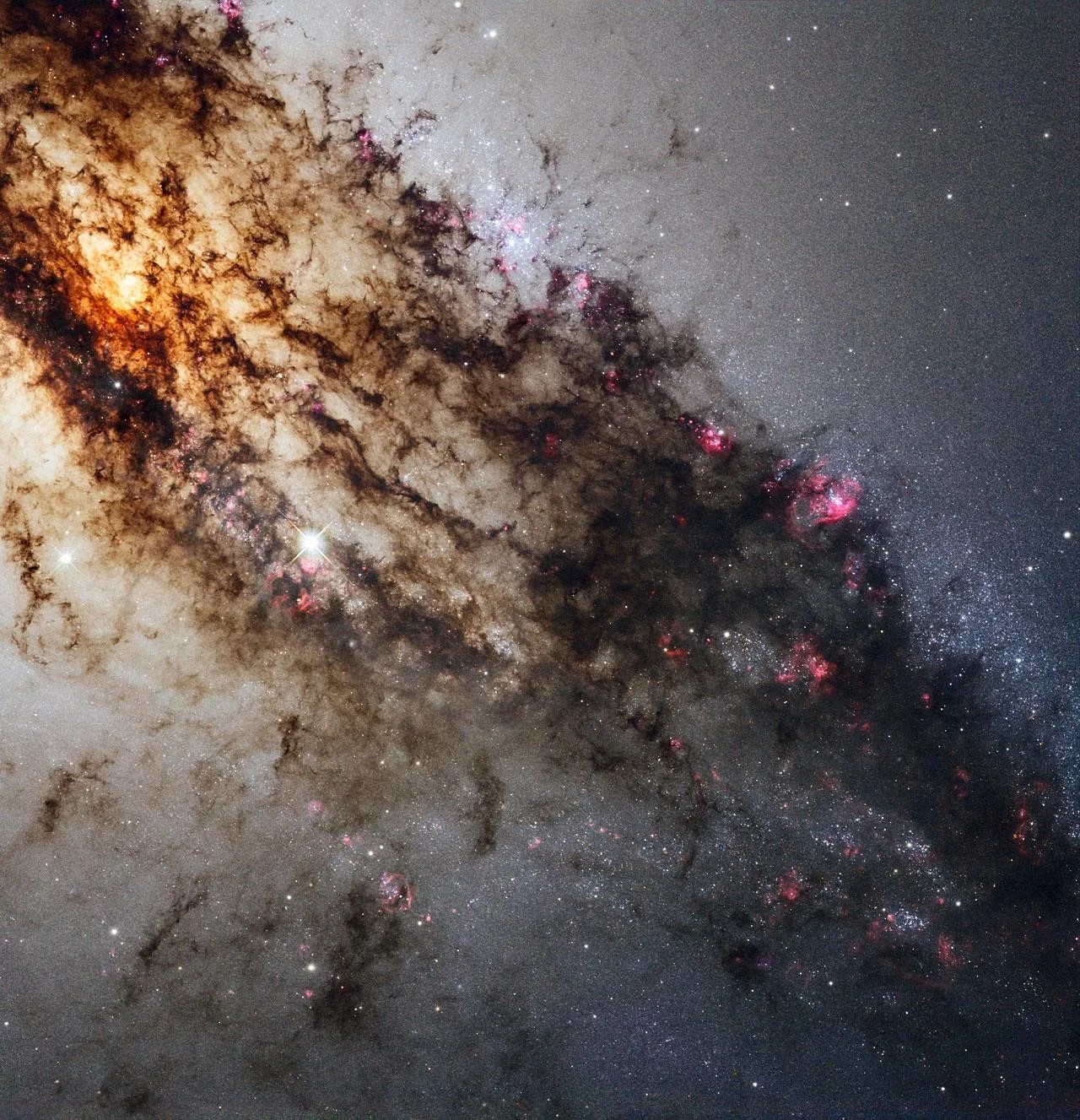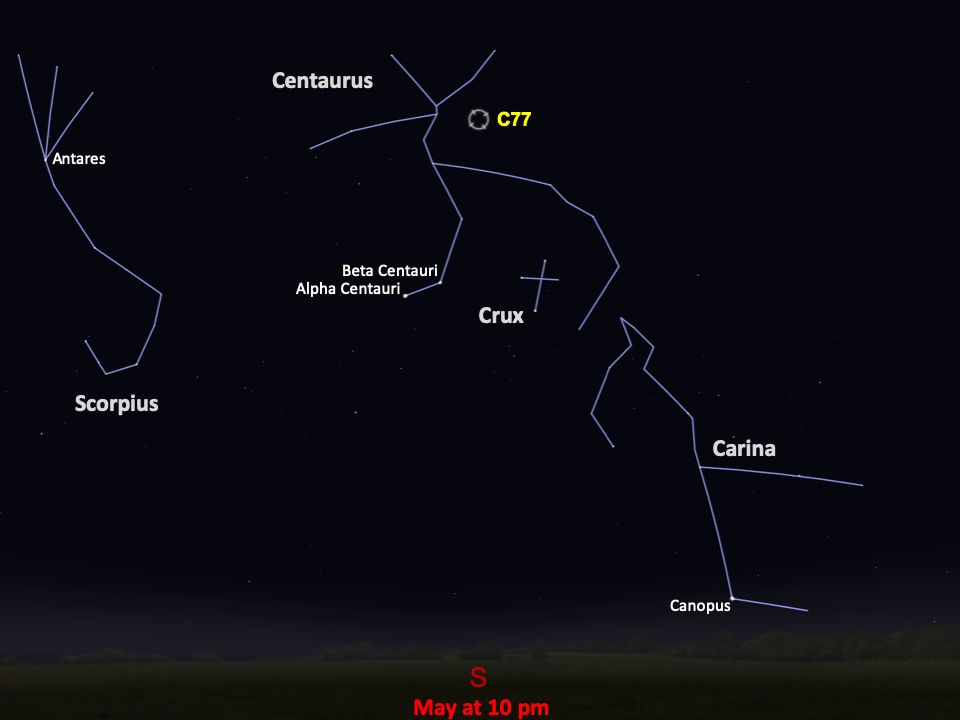Caldwell 77
Better known as Centaurus A, Caldwell 77 is the closest active galaxy to Earth.
Distance
11 million light-years
Apparent Magnitude
6.7
constellation
Centaurus
object type
Elliptical Galaxy
Caldwell 77, also cataloged as NGC 5128 and commonly called Centaurus A, is a peculiar elliptical galaxy. Centaurus A is apparently the result of a collision between two otherwise normal galaxies, which led to a fantastic jumble of star clusters and dark, imposing dust lanes. Near the galaxy's center, leftover cosmic debris is steadily being consumed by a central supermassive black hole, making Centaurus A something astronomers call an active galaxy. As in other active galaxies, the black hole’s feeding process generates bursts of radio, X-ray, and gamma-ray light.
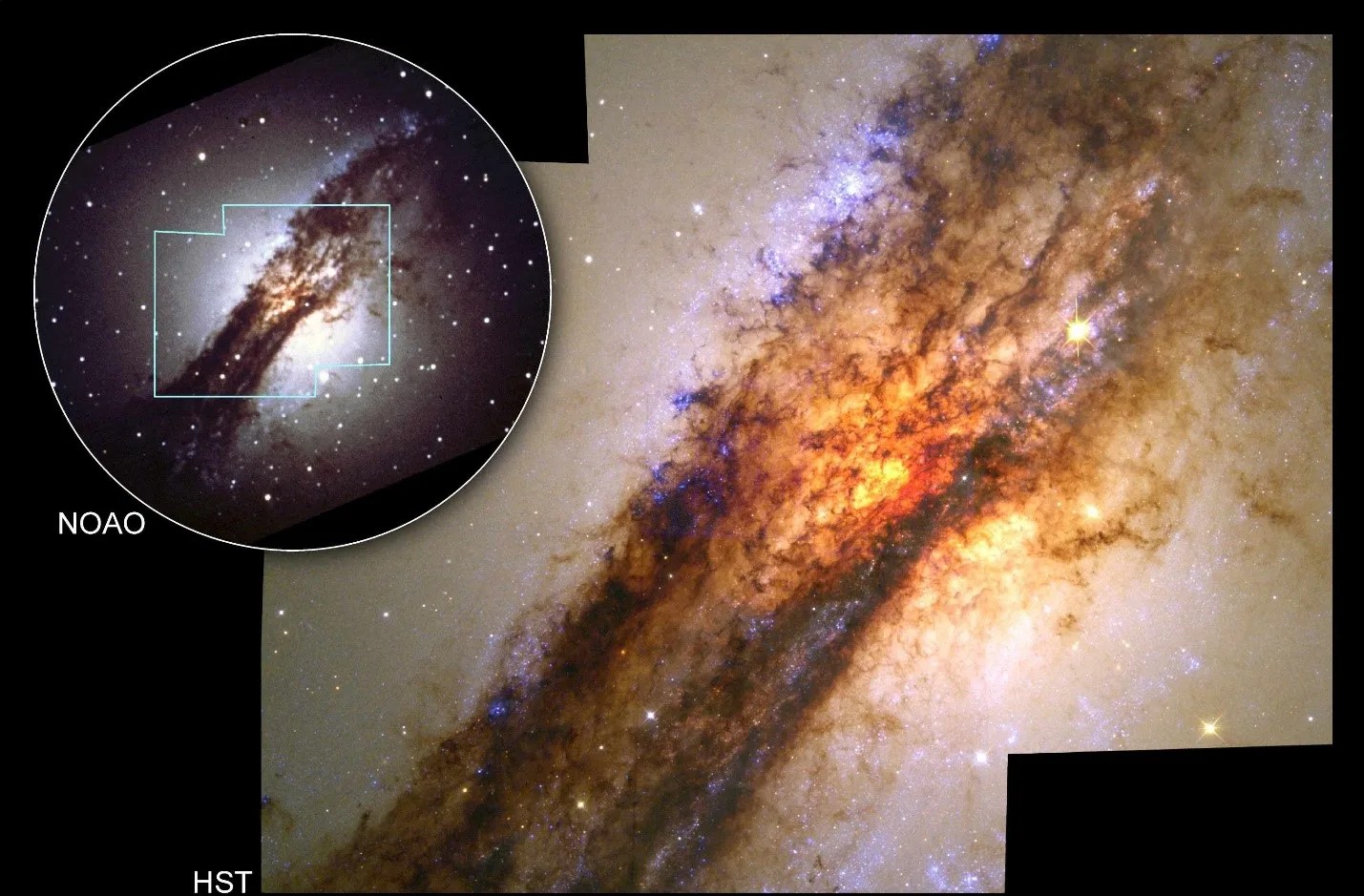
“Only” about 11 million light-years away (not far in cosmic terms), Centaurus A is the closest active galaxy to Earth. The galaxy is about 60,000 light-years wide, but this Hubble image zooms in on a region that is about 8,500 light-years wide. The image combines observations taken in visible, infrared, and ultraviolet light using Hubble’s Wide Field Camera 3 in 2010. Hubble’s observations of Centaurus A have provided insights into star formation in the galaxy, peering into regions typically obscured by dust and revealing the vibrant glow of young, blue star clusters. Using its infrared vision, Hubble also discovered that a tilted disk of hot gas 130 light-years across is encircling the black hole at the heart of Centaurus A, which is likely supplying material to a smaller, inner accretion disk that feeds the black hole. In addition, astronomers have used Hubble to probe the galaxy’s outskirts, finding that Centaurus A’s vast halo of stars extends much farther out than previously imagined.
In 1986, Centaurus A got the world’s attention when amateur astronomer Robert Evans discovered a Type Ia supernova in the bizarre galaxy. Supernovae like this one erupt after a compact star called a white dwarf siphons material off of a companion star, resulting in an uncontrolled fusion reaction that ultimately detonates the white dwarf. Since then, Centaurus A has produced just one more known supernova, observed in 2016.
Centaurus A was discovered by astronomer James Dunlop in 1826. It is the fifth brightest galaxy in the sky, making it an ideal target for amateur astronomers. It is best spotted from the Southern Hemisphere in autumn and can be found in the Centaurus constellation. Northern Hemisphere observers will need to be as far south as possible and look for the galaxy low in the southern sky during late spring. With a magnitude of 6.7, it’s visible in binoculars, but a telescope is recommended for ideal viewing. Through a telescope the galaxy will appear nearly circular, with its prominent, dark dust lane crossing the center.
For more information about Hubble’s observations of Caldwell 77, see:
Firestorm of Star Birth in the Active Galaxy Centaurus A
Hubble Provides Multiple Views of How to Feed a Black Hole
Hubble Traces the Halo of a Galaxy More Accurately than Ever Before

Glossary
Elliptical Galaxy - A nearly featureless, spherical or football-shaped galaxy, typically lacking new star formation and often containing much older stars than those in spiral galaxies.
Galactic Halo - A roughly spherical collection of old stars and globular clusters surrounding a spiral galaxy.
Magnitude - The brightness of an astronomical object, represented by a number; bright objects have low numbers on the magnitude scale, while dim objects have high numbers.
Supermassive Black Hole - A black hole millions or billions of times more massive than the Sun, typically residing at the center of a large galaxy.
Supernova - The explosion of a massive star at the end its life, which ejects material into space and causes the star to temporarily brighten in our sky.
White Dwarf - The core of a dead Sun-like star whose outer layers have been expelled into space.
Explore Hubble's Caldwell Catalog
The following pages contain some of Hubble’s best images of Caldwell objects.
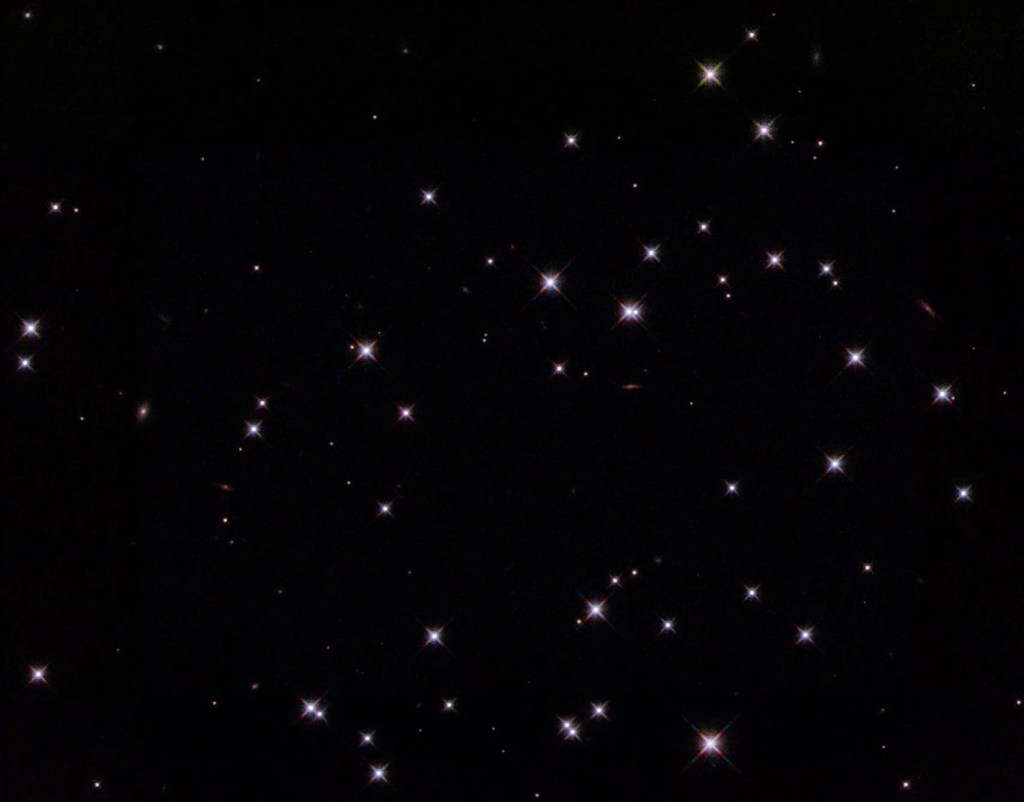
Also known as NGC 188, this group of stars formed from a large cloud of gas making the stars roughly…
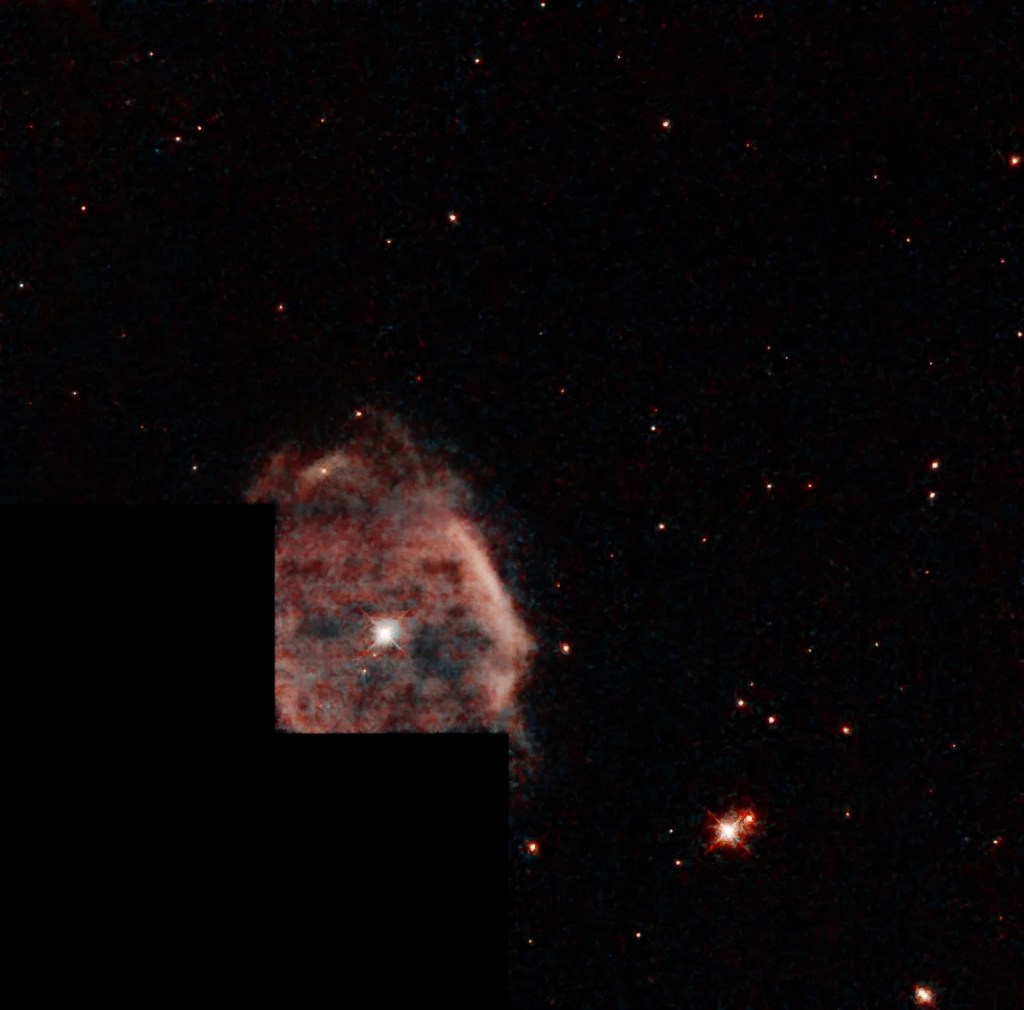
This shell of gas is expanding outward, away from the dying star within.
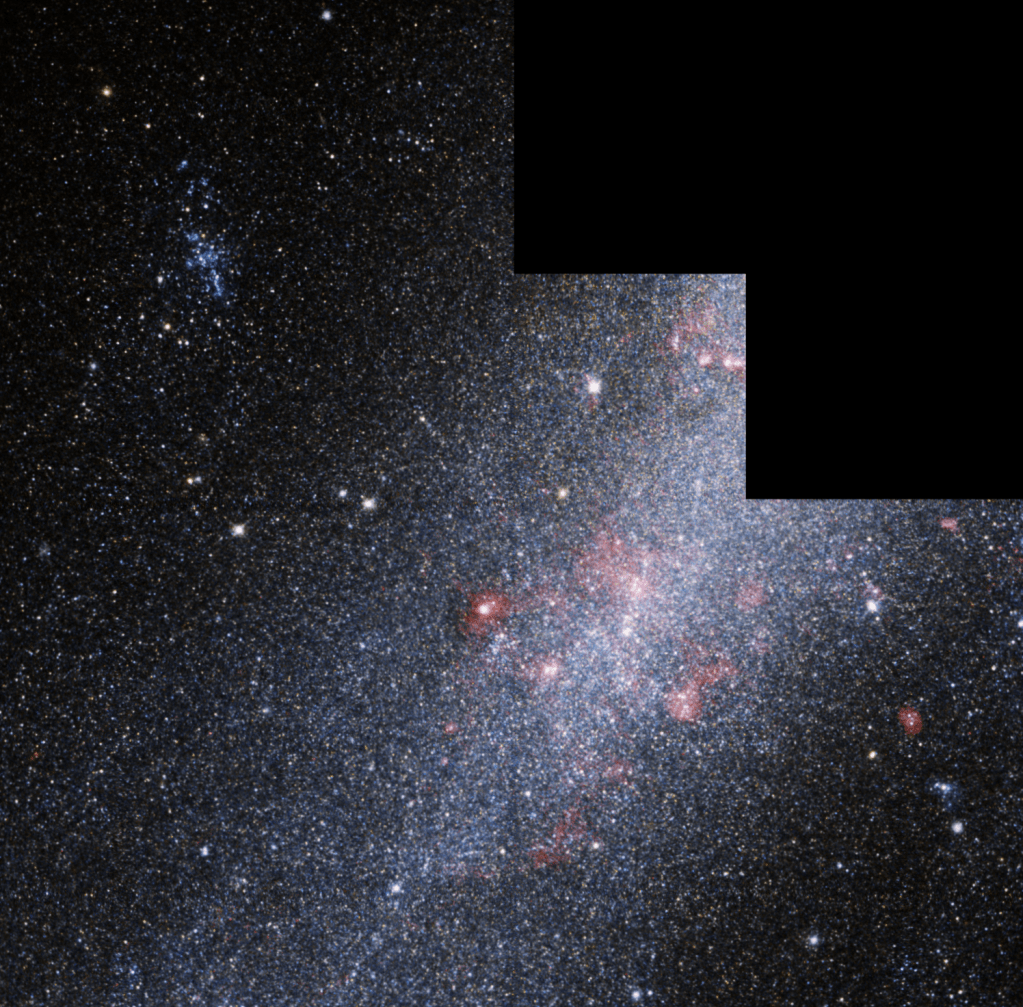
This barred spiral galaxy was first spotted by British astronomer William Herschel in April 1793 in the constellation Draco.

























